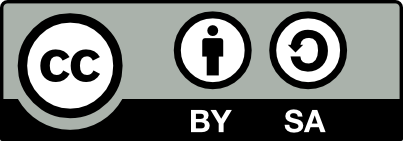
International Journal For Multidisciplinary Research
E-ISSN: 2582-2160
•
Impact Factor: 9.24
A Widely Indexed Open Access Peer Reviewed Multidisciplinary Bi-monthly Scholarly International Journal
Home
Research Paper
Submit Research Paper
Publication Guidelines
Publication Charges
Upload Documents
Track Status / Pay Fees / Download Publication Certi.
Editors & Reviewers
View All
Join as a Reviewer
Get Membership Certificate
Current Issue
Publication Archive
Conference
Publishing Conf. with IJFMR
Upcoming Conference(s) ↓
WSMCDD-2025
GSMCDD-2025
AIMAR-2025
Conferences Published ↓
ICCE (2025)
RBS:RH-COVID-19 (2023)
ICMRS'23
PIPRDA-2023
Contact Us
Plagiarism is checked by the leading plagiarism checker
Call for Paper
Volume 7 Issue 4
July-August 2025
Indexing Partners



















Exploring the Role of Mirror Therapy in Neurological Rehabilitation: Enhancing Motor Recovery in Parkinson’s Disease and Post-Stroke Patients
| Author(s) | Laljibhai Makwana |
|---|---|
| Country | USA |
| Abstract | Technology is a very powerful tool and can help patients a great deal in neurological rehabilitation, especially in cases of Parkinson's disease and after a stroke. The awareness method developed in this technique aims to trick the brain into thinking the nonfunctional limb is functioning by reflecting the desired voluntary motion of the impaired limb to the brain through videos. The therapy helps by using mirror neurons which facilitate motor and movement learning as well as recovery. In PD patients, the use of mirror therapy appeared to have benefits in decreasing various motor problems including tremors, rigidity, and akinesia and in increasing overall motor flow and smoothness. In the same context, post-stroke rehabilitation assists in the management of the motor function, flexibility and functional use of the affected extremities. Clinically relevant and easily integrated into existing rehabilitation protocols because it is noninvasive and inexpensive, it can be done either in clinical or home environments. Studies have shown that by integrating mirror therapy, results improve incrementally with improved mobility and independence together with better quality of life over conventional physical therapy. The present paper discusses the theoretical background of mirror therapy, its use in Parkinson's disease and post-stroke rehabilitation, and its impact on motor recovery. Despite the relative rise in popularity of mirror therapy, the present study intends to provide it as a key complementary intervention in neurological rehabilitation by presenting the available evidence of its effectiveness. |
| Keywords | Technology is a very powerful tool and can help patients a great deal in neurological rehabilitation, especially in cases of Parkinson's disease and after a stroke. The awareness method developed in this technique aims to trick the brain into thinking the nonfunctional limb is functioning by reflecting the desired voluntary motion of the impaired limb to the brain through videos. The therapy helps by using mirror neurons which facilitate motor and movement learning as well as recovery. In PD patients, the use of mirror therapy appeared to have benefits in decreasing various motor problems including tremors, rigidity, and akinesia and in increasing overall motor flow and smoothness. In the same context, post-stroke rehabilitation assists in the management of the motor function, flexibility and functional use of the affected extremities. Clinically relevant and easily integrated into existing rehabilitation protocols because it is noninvasive and inexpensive, it can be done either in clinical or home environments. Studies have shown that by integrating mirror therapy, results improve incrementally with improved mobility and independence together with better quality of life over conventional physical therapy. The present paper discusses the theoretical background of mirror therapy, its use in Parkinson's disease and post-stroke rehabilitation, and its impact on motor recovery. Despite the relative rise in popularity of mirror therapy, the present study intends to provide it as a key complementary intervention in neurological rehabilitation by presenting the available evidence of its effectiveness. |
| Published In | Volume 3, Issue 3, May-June 2021 |
| Published On | 2021-06-24 |
| DOI | https://doi.org/10.36948/ijfmr.2021.v03i03.16428 |
| Short DOI | https://doi.org/g82h58 |
Share this

E-ISSN 2582-2160
CrossRef DOI is assigned to each research paper published in our journal.
IJFMR DOI prefix is
10.36948/ijfmr
Downloads
All research papers published on this website are licensed under Creative Commons Attribution-ShareAlike 4.0 International License, and all rights belong to their respective authors/researchers.

